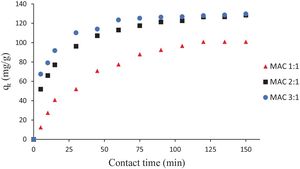A newly constructed risk score model utilizing angiogenesis-related genes may help predict the prognosis of hepatocellular carcinoma (HCC) patients.
Hepatocellular carcinoma (HCC) poses significant challenges globally due to its high morbidity and mortality rates. This aggressive malignancy, accounting for over 90% of primary liver cancers, requires improved prognostic strategies to facilitate more effective treatment options. A recent study has made strides toward addressing this need by developing and validating a risk score model based on 13 angiogenesis-related genes.
Angiogenesis plays a pivotal role not only in tumor growth but also metastasis, making it central to HCC progression. The study, conducted by researchers at Guizhou Medical University, utilized extensive RNA sequencing data sourced from public databases including The Cancer Genome Atlas (TCGA) and Gene Expression Omnibus (GEO). They aimed to establish new prognostic biomarkers focusing on angiogenesis to provide clinicians with more reliable tools for predicting patients’ outcomes.
The motivation behind this research was clear: existing treatment strategies for HCC, such as surgical interventions and targeted therapies, have limited efficacy, with advanced patients often facing poor overall survival times, estimated at just 1–1.5 years. Consequently, the identification of new markers to help predict HCC prognosis is imperative.
To achieve their goals, the researchers adopted several methodical approaches. They performed Cox regression analyses and LASSO regression to refine the selection of genes pertinent to angiogenesis and patient outcomes. Initial findings revealed 30 genes linked to prognosis, out of which 13 went on to form the basis of the prognostic model. This model stratified patients’ risk based on their gene expression profiles and was validated using external datasets.
Indeed, the results were promising. The risk score model demonstrated considerable predictive accuracy, achieving Area Under the Curve (AUC) values of 0.73, 0.67, and 0.76 for predicting 1-year, 3-year, and 5-year survival rates, respectively. Such metrics indicate the model's robustness across various patient cohorts and signify its potential as a reliable clinical tool.
Crucially, the authors stated, "We constructed novel risk score models as prognostic biomarkers for HCC, which have the potential to guide the development of more personalized treatment strategies for HCC patients." This assertion reflects the broader clinical relevance of regularly assessing patient prognosis, particularly as new treatments emerge.
Another key finding was the differential expression of the selected angiogenesis-related genes, particularly AEBP1, ATP2A3, PLAT, and PNMA1. All were shown to exhibit high expression levels within liver tissue, differentiability which could support targeted therapeutic strategies. The influence of these genes is particularly notable, as they were associated with inhibiting proliferation, migration, and invasion of HCC cells, highlighting their potential as novel therapeutic targets.
The study also examined the tumor microenvironment, indicating high-risk patients tended to have reduced levels of immune infiltration. This aspect is pivotal as it correlates with poorer survival rates, emphasizing how the angiogenic processes might be shaping the immune response and overall disease progression.
Overall, the findings from this study encapsulate significant advancements toward constructing dependable prognostic indicators for HCC. Research efforts directed toward confirming these biomarkers and integrating them within clinical applications could redefine treatment methodologies for patients facing this challenging cancer.
For oncologists and researchers alike, the introduction of such risk models opens the door to not only advancing personalized treatment strategies but also improving survival predictions. Nevertheless, the researchers stress the need for larger clinical datasets to validate their risk score model and urge necessary future investigations.



